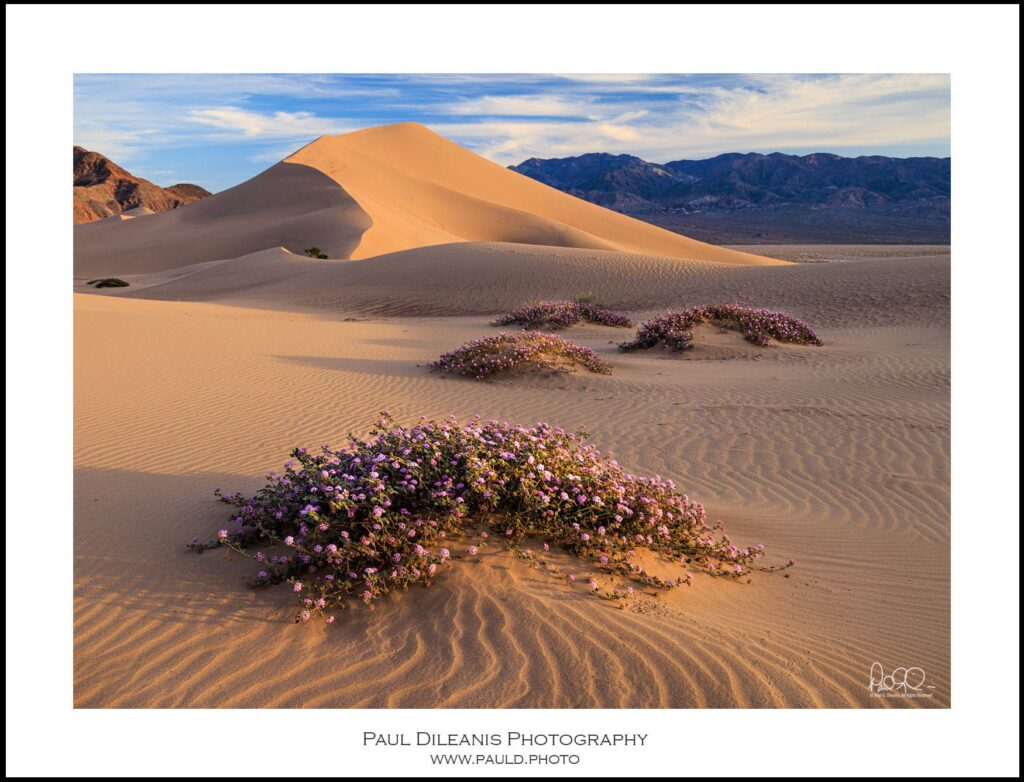
Desert Sand Verbena were abundant this March in the Ibex Dunes. Sunset light created a warm glow to the dunes while emphasizing the shadows and patterns in the sand.
“The dunes are changed by the wind, but the desert never changes.” Paulo Coelho The Alchemist
The everchanging features of sand dunes are captivating to photographers. Along with the ephemeral nature of the shapes and patterns, the light can create many moods. This light, ranges from the strong “Heroic” sunlit desolation and sharp shadows heralded by Ansel Adams to the more sublime, atmospheric soft light in the predawn or at dusk.
On a recent trip to Death Valley I was able to witness the shifting nature of sand dunes thanks to the prevailing winds during our visit. Over a period of several days the winds ranged from mild to almost gale force. At one point the sand was blowing so hard that my footprints were disappearing as I walked.
In March I visited the Panamint Dunes and the Ibex Dunes in Death Valley. These remote dunes are not as reachable as the Mesquite Flat Dunes. Both of these sites require a high clearance, preferably 4 wheel drive vehicle to get to the trailhead. Panamint Dunes in the north end of the Panamint Valley are a 3 mile trek from the nearest jeep road while the Ibex Dunes in the far south end of the park are a 1.5 mile hike from the nearest road.
Because these dunes see less visitors the aesthetics of the dunes do not suffer the same blight from footprints and sand surfers encountered in more popular easily accessible dunes.
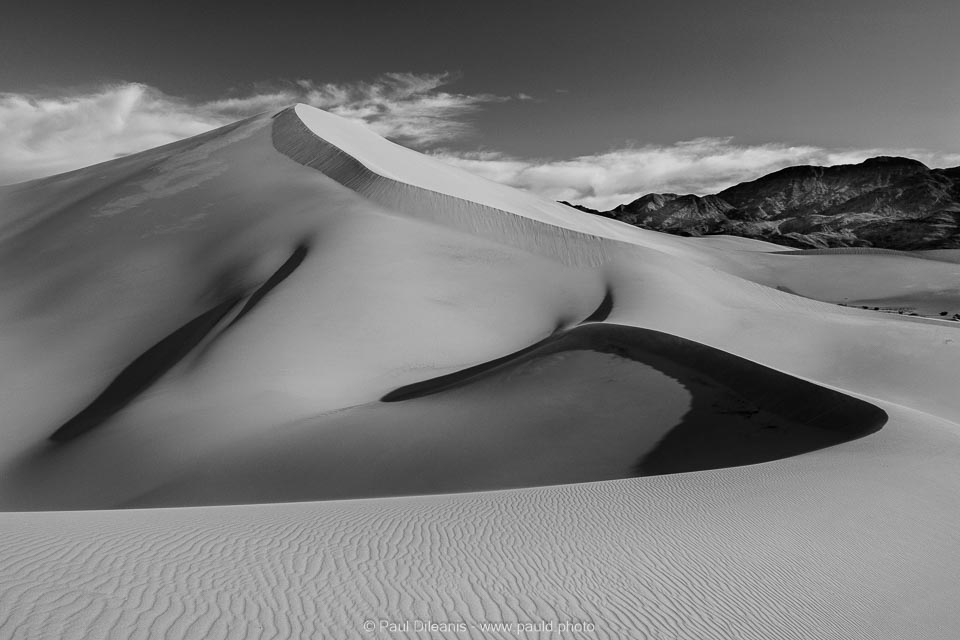
Iconic dune image from Ibex Dunes. Late morning light emphasizes the distinct shadows along the ridges and reveals the patterns in the sand.
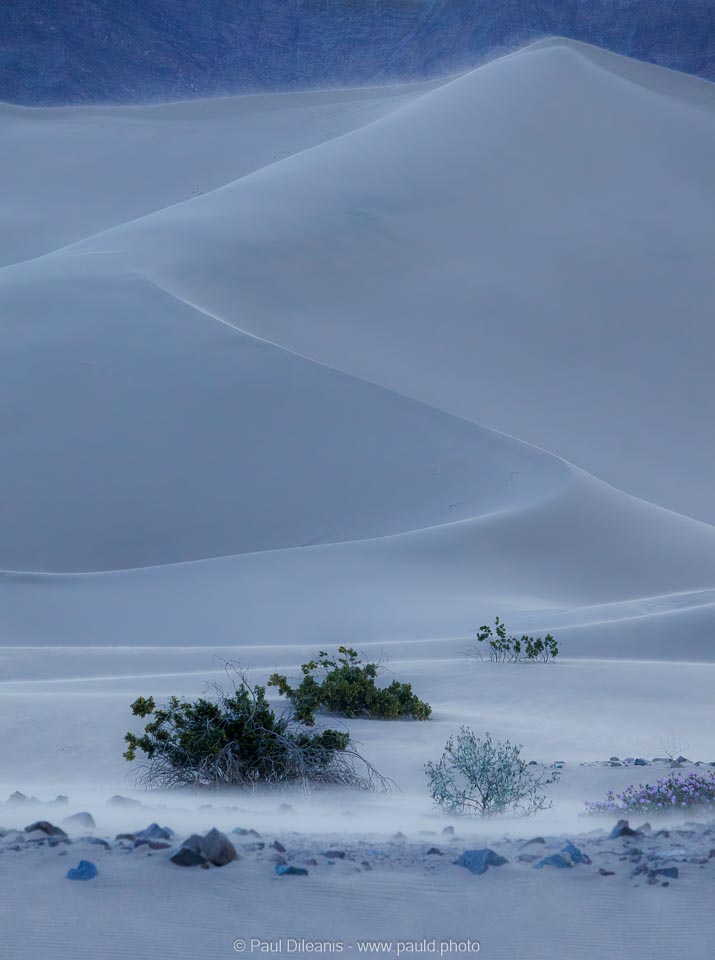
Blowing sand along with the cool diffuse blue hour light created a soft, dreamy abstract look to the Ibex Dunes.
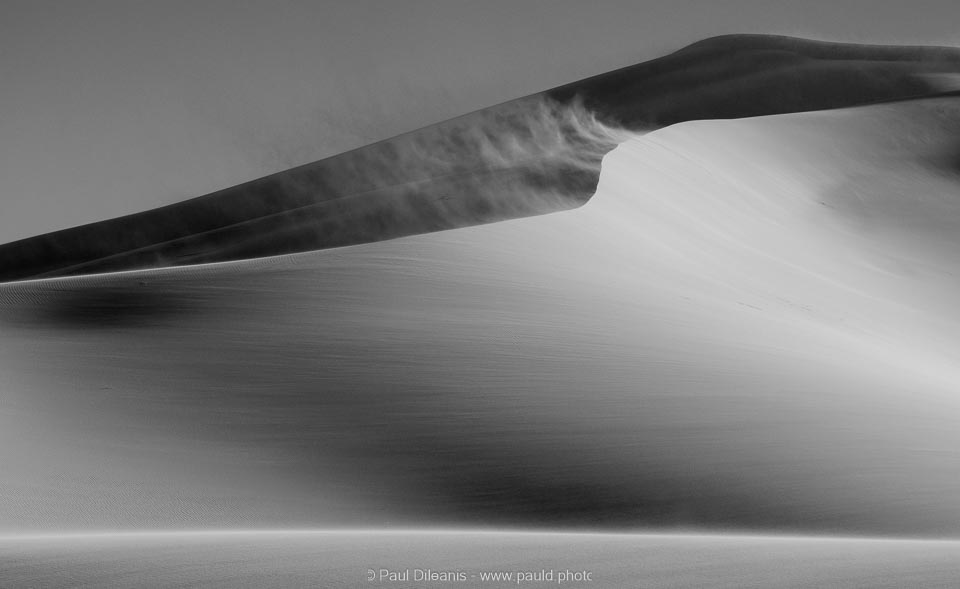
Blowing sand during near gale force winds streaks across the face of the dunes. Even though this image was captured at 1/320 of a second shutter speed the movement of the sand is still visible.
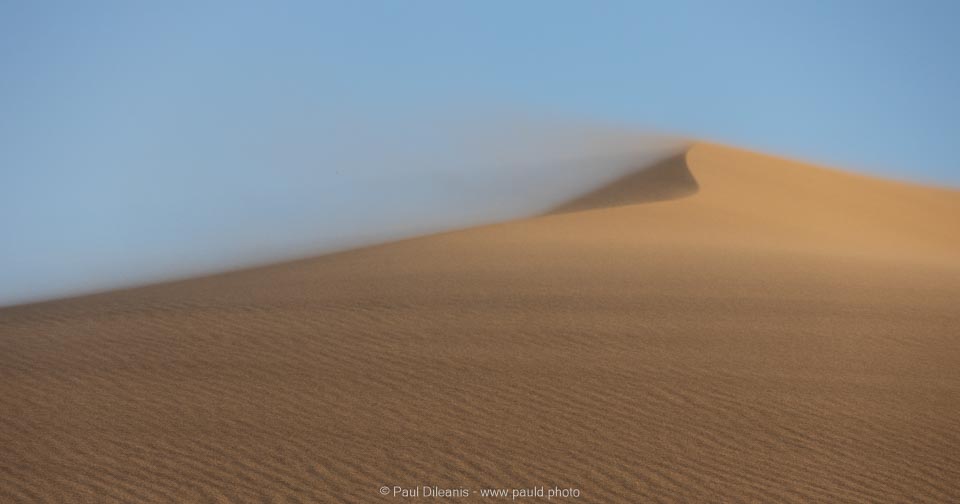
Wind is the primary driving force in the ephemeral nature of sand dunes. At times one can witness this geomorphic evolution in real time. In the image above I have chosen to use a technique known as Defocus to create a dream like impression of the transient characteristic of dunes.
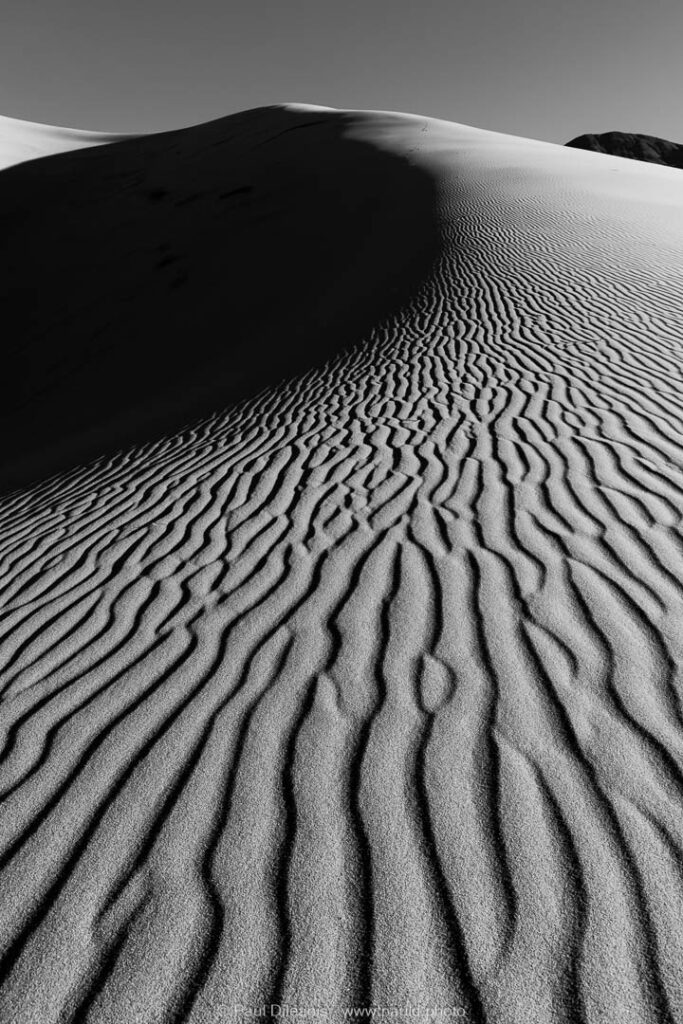
A low camera angle and wide-angle lens can emphasize patterns in the foreground.
Tips for Photographing Sand Dunes
When capturing the vastness and beauty of sand dunes you should consider the light, composition, and lens choice. Here are some tips to help you improve your sand dune photography:
Light is Key:
- Golden Hour is Magic: Aim for sunrise or sunset, also known as the “golden hour.” The low angle of the sun casts long shadows and creates a warm, dramatic light that accentuates the textures and contours of the dunes.
- Blue Hour is Sublime: The cool soft light before the golden hour begins can produce moody atmospheric images.
Composition Techniques:
- Leading Lines: Sand dunes naturally create converging lines that draw the viewer’s eye into the image. Use these lines to your advantage by positioning your camera to create a strong composition .
- Foreground Interest: Include a foreground element such as sand patterns, footprints, or vegetation to add depth and context to your photo.
- Play with Perspective: Experiment with different angles. Get low to emphasize the scale of the dunes or climb to a high point for a panoramic vista.
Choosing Your Lens: Wide or Telephoto?
- Wide-angle lenses are great for capturing the vastness of the dune field and putting emphasis on foreground objects such as patterns.
- Using a telephoto lens can isolate patterns or interesting formations in the distance.
Additional Tips:
- Protect Your Gear: Sand is an enemy of cameras. Pack a blower and a brush to remove sand and dust particles after your dune photo session.
- Use a UV filter for added protection for your lens. When the sand is blowing hard it can potentially scratch the front element of your lens.
- Embrace the Elements: Be prepared for wind and shifting sands. Dress appropriately and bring a tripod for stability during long exposures.
- Scout the Location: If possible, visit the dunes beforehand to familiarize yourself with the terrain and plan your shots.
By following these tips and letting your creativity flow, you’ll be well on your way to capturing stunning photographs of sand dunes.
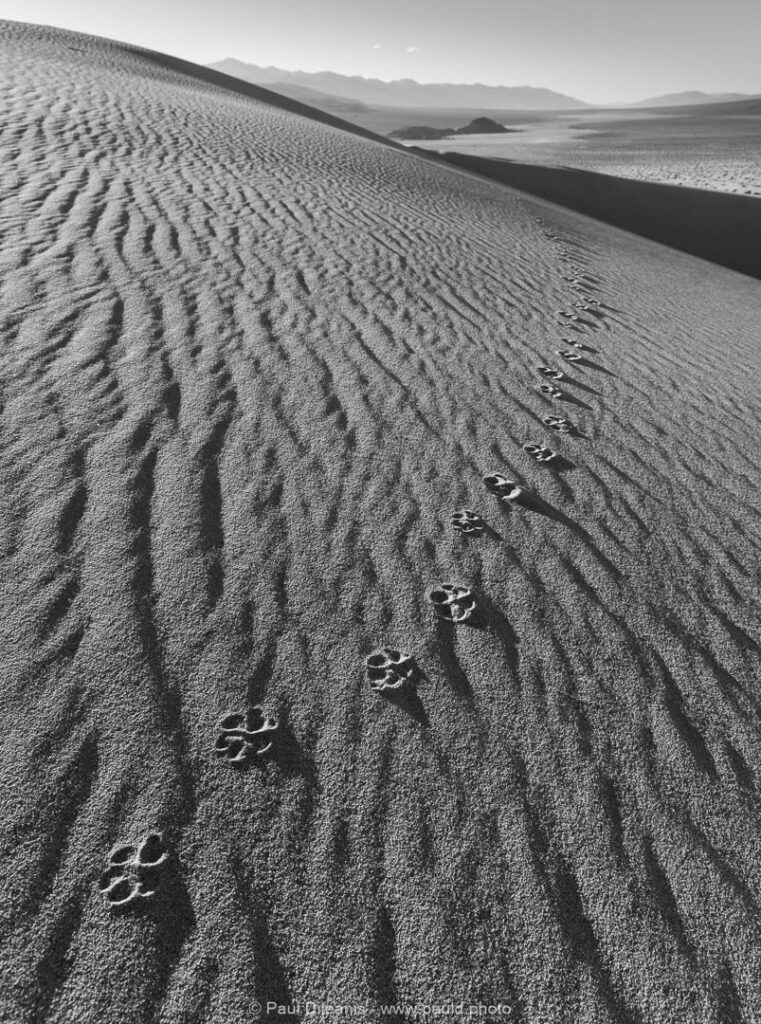
Fox tracks cross the crest of a dune at sunrise. In the harsh desert day the dunes are mute and seemingly lifeless. At night the dunes are teeming with life. Keep your eye out for animal tracks. The tracks divulge the richness of life in the dunes as well as reveal tales of survival.